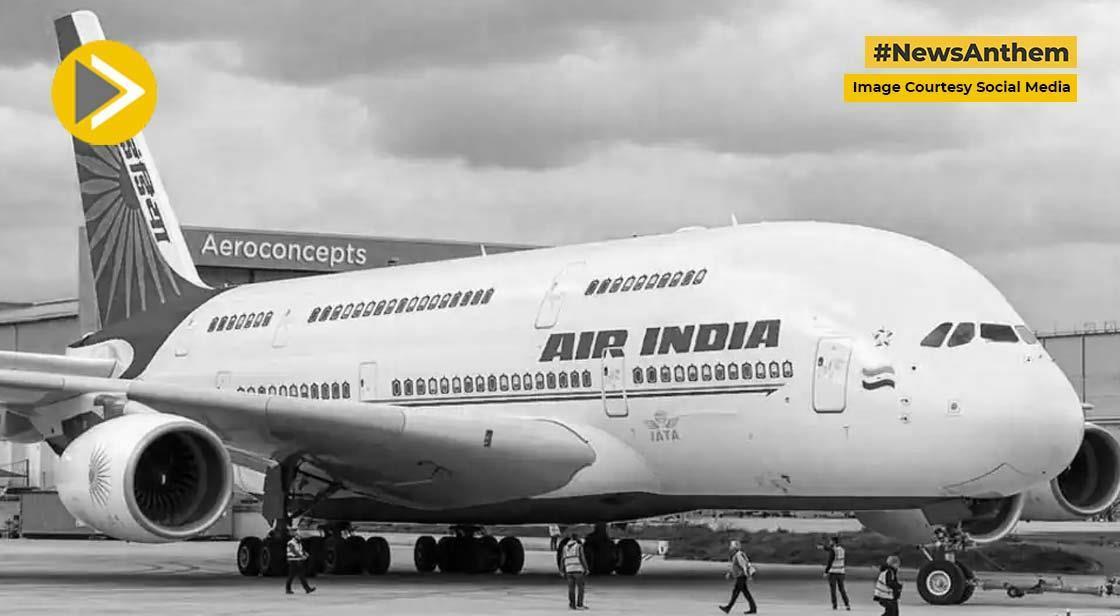DGCA Issues Show-Cause Notice to Air India for FDTL Breach on Two Consecutive Days

News Synopsis
India’s aviation watchdog, the Directorate General of Civil Aviation (DGCA), has served a show-cause notice to Air India, owned by the Tata Group, for allegedly violating Flight Duty Time Limitations (FDTL) applicable to flight crew members.
Violations Detected During Spot Checks
On Saturday, sources disclosed that the suspected violations were identified during unannounced inspections by DGCA officials on Air India’s Bengaluru–London flights (AI133), operated on May 16 and 17.
As per the notice issued by the aviation regulator,
“During a spot check, it has been observed that the Accountable Manager of Air India operated two flights from Bangalore to London on May 16 and 17, both of which exceeded the stipulated flight time limit of 10 hours,”
a clear violation of the norms outlined under the Civil Aviation Requirement (CAR Section 7, Series J Part III).
Accountability and Safety Lapses Noted
In addition to the flight time breach, the DGCA has flagged the Accountable Manager's failure to enforce mandatory rules related to crew duty hours. The regulator emphasized a significant lapse in compliance with aviation safety protocols.
“The airline’s Accountable Manager failed to ensure adherence to the mandatory provisions regarding crew duty hours,”
the DGCA observed, indicating a potential risk to flight safety due to crew fatigue.
DGCA Demands Response Within Seven Days
In response to the findings, the DGCA has instructed Air India to provide a written explanation within seven days, stating why regulatory action should not be taken for the reported violations.
Understanding FDTL and Its Importance
Flight Duty Time Limitations (FDTL) are regulatory norms designed to protect crew members from fatigue, a key factor in ensuring flight safety. Breaches of FDTL are treated with seriousness by aviation regulators globally, including India.
About Directorate General of Civil Aviation (DGCA)
The Directorate General of Civil Aviation (DGCA) is the primary regulatory body for civil aviation in India. It is an attached office of the Ministry of Civil Aviation, Government of India, and plays a critical role in ensuring the safety, security, and efficiency of air transport services to, from, and within India. Its functions are comprehensive, covering everything from aircraft airworthiness to pilot licensing and accident investigation.
Historical Context and Establishment
The origins of civil aviation regulation in India can be traced back to the pre-independence era.
-
1927: The Aircraft Act was enacted, laying the foundational legal framework for aviation in British India. Concurrently, the Office of the Director of Civil Aviation was established under the Department of Industries and Labour to administer this Act.
-
1947: Following India's independence, the DGCA was formally established as a separate department under the Ministry of Communications, recognizing the growing importance of civil aviation.
-
1972: The DGCA was brought under the newly formed Ministry of Tourism and Civil Aviation, which later evolved into the Ministry of Civil Aviation.
-
Aircraft Amendment Act, 2020: A significant legislative development recently elevated the DGCA from an "attached office" to a statutory body, granting it more legal teeth and autonomy in its regulatory functions. This change further strengthened its position as the ultimate authority in Indian civil aviation safety and oversight.
The DGCA's establishment and evolution reflect India's increasing engagement with global aviation standards and the need for a robust domestic regulatory framework as its aviation industry expanded, especially after the "open sky policy" of the 1990s liberalized the sector, allowing private airlines to flourish.
DGCA Core Functions and Responsibilities
The DGCA's mandate is vast and covers all critical aspects of civil aviation:
-
Regulation of Air Transport Services:
-
Granting Air Operator's Certificates (AOCs) to Indian carriers (scheduled and non-scheduled).
-
Regulating air transport services operating to/from/within/over India by both Indian and foreign operators.
-
Granting clearances for scheduled and non-scheduled flights.
-
Issuing Civil Aviation Requirements (CARs), which are detailed regulations governing various aspects of civil aviation, including air transport operations.
-
-
Airworthiness Standards:
-
Formulating and enforcing standards of airworthiness for all civil aircraft registered in India.
-
Granting Certificates of Airworthiness (CofA) to aircraft after ensuring they meet safety standards.
-
Approving aircraft maintenance, repair, design, and manufacturing organizations, and ensuring their continuous oversight.
-
Monitoring maintenance records and approving maintenance programs of operators.
-
-
Personnel Licensing and Training:
-
Licensing of critical aviation personnel, including pilots (PPL, CPL, ATPL), Aircraft Maintenance Engineers (AMEs), Flight Engineers, and Air Traffic Controllers (ATCs).
-
Conducting examinations and proficiency checks for these licenses.
-
Approving and overseeing flying training organizations, AME training institutes, air traffic services training, and other aviation-related training programs to ensure high quality.
-
-
Aerodrome and Ground Aids Certification:
-
Certifying and licensing aerodromes (airports) in India to ensure they meet safety and operational standards.
-
Overseeing Communication, Navigation, and Surveillance/Air Traffic Management (CNS/ATM) facilities.
-
-
Safety Oversight and Accident/Incident Investigation:
-
Conducting investigations into aviation accidents and serious incidents (especially involving aircraft up to 2250 kg AUW) to determine causes and recommend preventative measures.
-
Formulating and implementing Safety Aviation Management Programmes.
-
Conducting regular safety audits and inspections of airlines, airports, and other aviation service providers to ensure compliance with regulations.
-
Enforcing civil aviation regulations and standards, with powers to impose fines, suspend/revoke licenses, or initiate criminal prosecution for serious violations.
-
-
International Coordination:
-
Coordinating all regulatory functions with the International Civil Aviation Organization (ICAO), the UN specialized agency for international aviation.
-
Ensuring that Indian civil aviation regulations and practices comply with ICAO Standards and Recommended Practices (SARPs). India is a signatory to the Chicago Convention, obligating it to adhere to ICAO standards.
-
Representing India in international aviation forums.
-
-
Airspace Management and Environmental Oversight:
-
Coordinating with civil and military air traffic agencies at the national level for flexible use of airspace.
-
Keeping a check on aircraft noise and engine emissions in accordance with ICAO Annex 16 and collaborating with environmental authorities.
-
-
Promotion of Indigenous Manufacturing:
-
Acting as a catalytic agent to promote indigenous design and manufacture of aircraft and aircraft components within India.
-
DGCA Organizational Structure
The DGCA is headquartered in New Delhi (specifically, along Sri Aurobindo Marg, opposite Safdarjung Airport). It is headed by a Director General, who is supported by several Joint Directors General and Deputy Directors General. The organization is structured into various directorates and divisions, each specializing in a specific area such as:
-
Air Safety
-
Airworthiness
-
Air Transport
-
Flight Standards
-
Personnel Licensing and Training
-
Aerodrome Standards
-
Air Navigation Services Standards
-
Medical Section
-
Central Examination Organisation
Recent Developments and Focus Areas (as of June 2025)
The DGCA remains highly active in its oversight role, constantly adapting to the dynamic aviation landscape:
-
Enhanced Safety Inspections: As of mid-June 2025, the DGCA has been particularly vigilant, mandating and conducting enhanced safety inspections, especially concerning wide-body fleets of Indian carriers like Air India (e.g., Boeing 787 fleet). This comes amid industry-wide scrutiny following various operational and maintenance issues.
-
Strict Enforcement Actions: The DGCA continues to demonstrate a firm stance on non-compliance. For instance, in June 2025, the DGCA directed Air India to immediately remove three senior officials responsible for crew scheduling and rostering due to "serious and repeated violations" related to pilot licensing, mandatory rest, and flight recency norms. This underscores the regulator's commitment to holding airlines accountable for maintaining safety protocols.
-
Passenger Facilitation: The DGCA reiterates obligations for operators to inform passengers well in advance about delays and cancellations, emphasizing passenger rights and service standards.
-
Operational Reliability and Defect Reporting: The regulator actively recommends and promotes systematic and real-time defect reporting mechanisms to enhance operational decision-making and reduce disruptions, ensuring that safety-critical departments receive timely updates.
-
Digital Transformation: The DGCA is increasingly leveraging digital tools for regulatory processes, inspections, and data management to enhance efficiency and transparency. Initiatives like e-governance portals and digital record-keeping are ongoing.
-
Global Benchmarking: The DGCA continuously works to align India's aviation safety standards and practices with global best practices and ICAO's Universal Safety Oversight Audit Programme (USOAP), ensuring India maintains its strong standing in international aviation.
Conclusion
The recent scrutiny on Air India highlights the DGCA’s renewed emphasis on aviation safety enforcement amid increasing international operations. With fatigue-related risks under the spotlight, adherence to FDTL norms remains non-negotiable. The aviation community now waits to see how Air India responds and what consequences may follow.
You May Like









